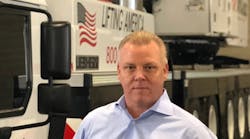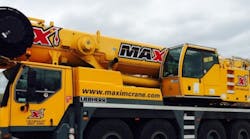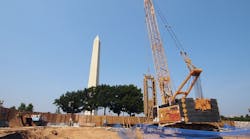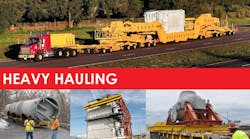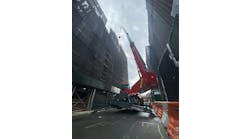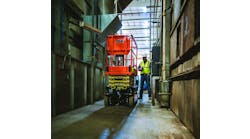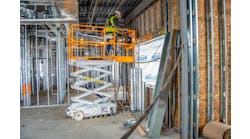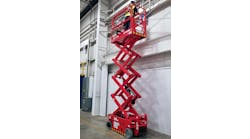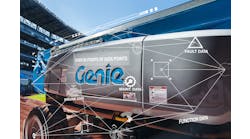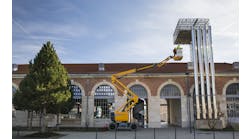RER recently interviewed several rental executives about their expectations for the coming year. Here Frank Bardonaro, chief operating officer for Maxim Crane, talks about Maxim’s continuing growth and expansion, the continuing battles over rental rates, the need for standard terms and conditions and more.
RER: How was 2017 for your company?
Bardonaro: Maxim Crane had an epic year. We had and incredibly safe year for our team and that is our No. 1 goal. We were able to continue our growth and expansion with successful integration of several new additions to the Maxim family of companies. This included the completion of the AmQuip, Coast and Essex acquisitions as well as nearly $100 million of additional equipment.
What are your expectations for your company in 2018?
Maxim is looking forward to 2000-GREATteen! We feel our team is positioned well to fully execute our plan for 2018. Our turn-key services, geographic footprint and customer outlook for the year is extremely positive.
What are your expectations based on?
Everyone can read the same reports and data. We focus on our customer feedback and strong relationships with our sales force to assist in our projections and manage our expectations. Based on our current backlog and customer activity, we are confident in 2018 being a strong growth year for Maxim and our customers.
Any overall thoughts about the economy in the foreseeable future?
Buy cranes, not bitcoins! Seriously, we feel very bullish on the next few years. We have visibility on utilization for nearly 75 percent of our fleet out for the next 12 to 18 months. Based on this outlook, we feel that 2018 and 2019 should be very good years for Maxim. Obviously, the industry can still benefit from some consolidation and infrastructure spending.
What segments do you expect to be strongest, i.e., energy, nonresidential construction, residential, industrial, etc.?
We feel that the key markets related to power, energy and industrial spending should remain positive and some of the other markets need a bit of a boost.
What segments were particularly strong in 2017?
2017 was a very strange mix. It really varied significantly by region. Since Maxim has over 50 branches and covers the entire U.S. market, we were able to re-deploy assets from some of the softer markets/segments and capture the hot markets both geographically and by segment on a very high level.
Did your company make any significant changes or additions in software, telematics or other technology in 2017? Do you plan any in 2018?
This is a great point to bring up. As we continue to expand via acquisitions as well as new cap-ex, we began implementing several new programs in 2017 and expect to increase that effort in 2018 regarding telematics, RFID, and other logistical enhancing products.
Did your company add any particular equipment lines or segments in 2017 or plan any in 2018?
Maxim, as you know, expanded very strategically over the past several years. As a result of that expansion, we identified a few key new product lines and complementary offerings that included the addition of a new line of hoists and heavy lift luffing tower cranes.
How do you see rental rates in your markets in ’17 and coming in ’18? Up, down, or essentially the same?
Obviously, there is always pricing pressure. The key issue that the crane rental industry continues to battle is the actual ROI needed based on new crane rates to ensure the sustainability of our fleets. The price for new equipment is up nearly 400 percent in some major categories and yet our equipment rates remain fairly flat. We should all look at the public data available for some of the general rental companies that are able to generate 4 percent to 6 percent per month ROI on their core fleet as well as 160-hour rental months. These are major issues for the industry and some that we all need to see improve.
What can you share about the impact of the hurricanes, both in how they affected your business and your people; and what’s going on in the aftermath in terms of recovery work?
Obviously, the hurricanes are fresh on everyone's mind. Thankfully, there were no crane-related injuries due to the heavy hurricane season that I am aware of. That being said, we are gathering all of the information available from the hurricanes to study the impact and results in order to ensure the safest operations possible, every day of the year. There is always a great deal of media coverage, of course, during an incident of any type related to a crane. I am confident that we, as a united industry, will work with manufacturers and officials to produce the safest crane-related operations in the world.
Any particular thoughts about how you see the rental industry changing in 2017, 2018 or foreseeable future?
This is a great question. As an industry, the crane rental companies can all complain about ROI, rates, insurance and other key issues. However, we are continuing to see that the actual contract terms and conditions that are in the market today may be a greater issue than any of the above topics. I feel that the industry must look to each other to develop "standard" terms and conditions that are similar to a "best practices" model to ensure that the competitive landscape is fair to both the crane supplier and the customer.
